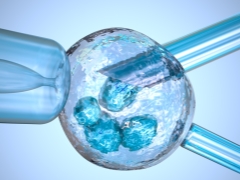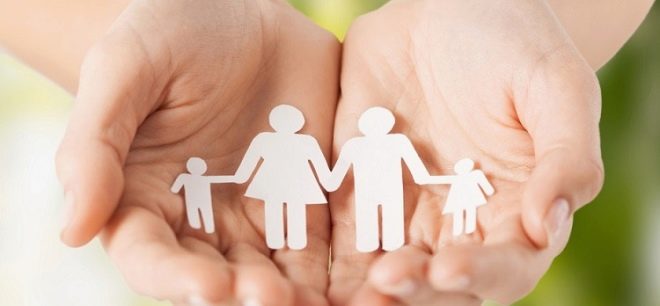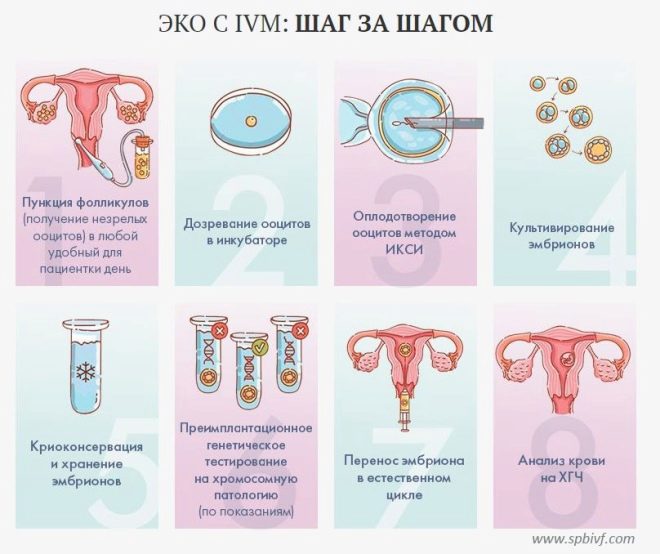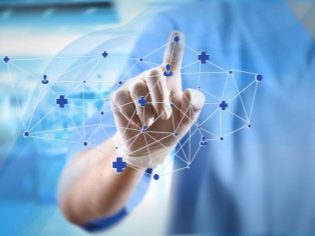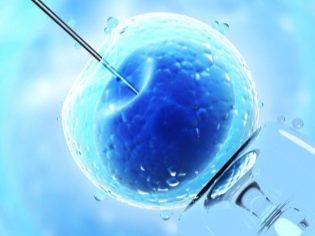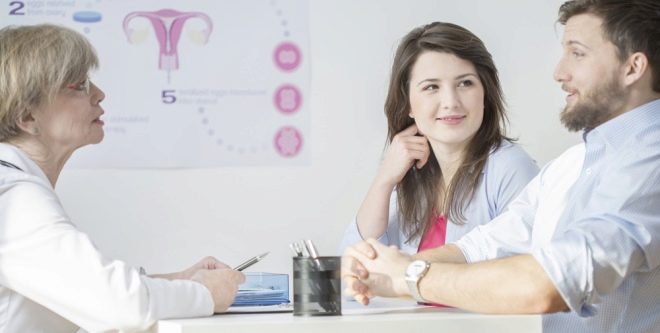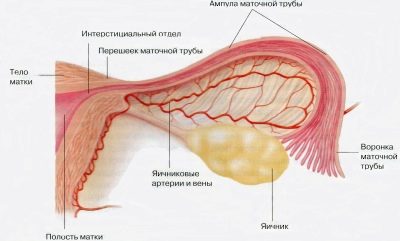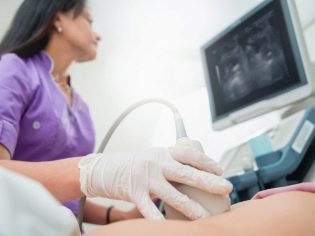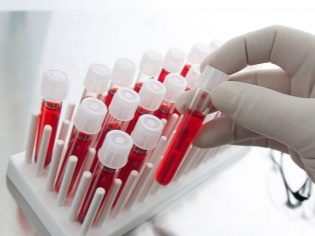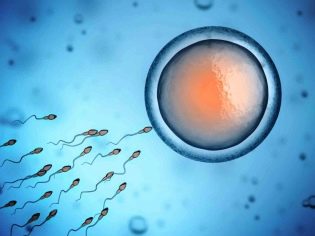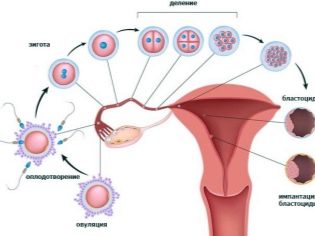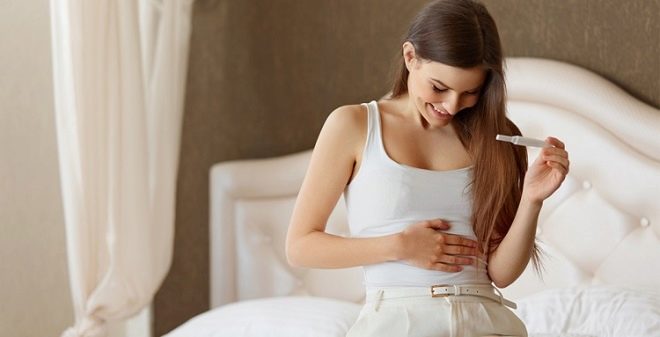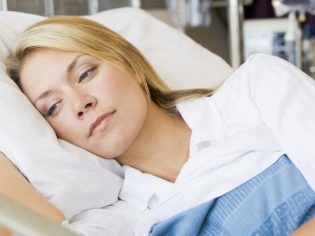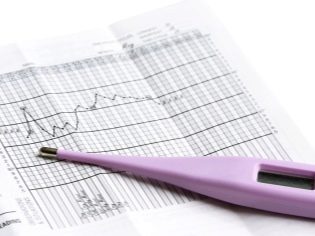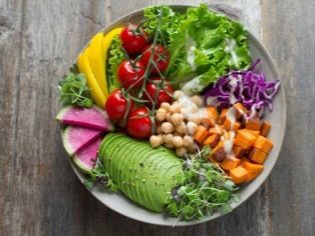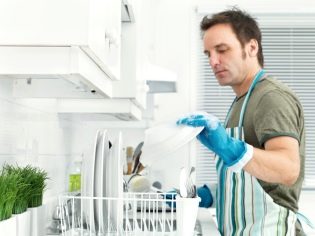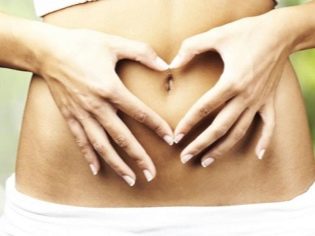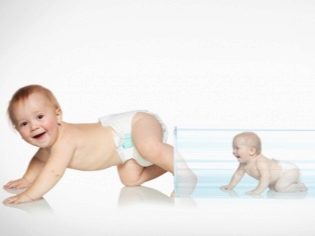IVF without hormonal stimulation in the natural cycle
Modern reproductive technologies and methods are not in place, so there are quite a lot of them. Which option to choose for a particular fruitless couple - the doctor decides, because each method has its own indications and contraindications. Increasingly, women facing IVF are interested in artificial insemination, as close as possible to natural conception - IVF in the natural cycle. You will learn about what a method is, as well as how it is carried out and is considered successful, after reading this article.
What it is?
In vitro fertilization in the natural cycle is a procedure that is carried out without hormonal stimulation.
With the standard scheme of the protocol stimulated IVF woman receives drug support before ovulation - she accepts hormones that contribute to the maturation of the follicles. Then the oocytes are collected by the puncture method. Oocytes fertilize with the sperm of a husband or donor, then only the most successful embryos are selected and transported to the uterus. After replanting, the woman again receives hormonal treatment, whose task is to increase the chances of survival of the embryo.
With IVF in the natural cycle, there is no drug stimulation. This method is as close as possible to natural conception, with the only difference being that fertilization of an egg by a sperm cell occurs not in the ampullary part of the fallopian tube, as provided by nature, but outside the maternal organism.
The unstimulated IVF program involves the use of frozen eggs, if they are already in the cryobank of a woman, frozen embryos, if there are any, and the use of native oocytes (obtained immediately before fertilization).
Such IVF is more benign, less traumatic, because there is no hormonal "blow" on the female body. However, the effectiveness of this method is also reduced. If we focus on statistics, it can be noted that the success of the IVF protocol with preliminary and subsequent stimulation is at the level of 30% from the first attempt. The chances of becoming pregnant naturally in a healthy couple the first time is about 7%. The effectiveness of IVF in the natural cycle without hormone stimulation is also about 7% at the initial stage, about 16% - after embryo replanting.
Given the statistics, it is not hard to guess that the protocols with the natural cycle may require much more than with IVF with stimulation, hence the considerable price and sometimes quite a long planning period. Unstimulated IVF is different not only by the protocol scheme and performance, but also by the possible "complications": the probability of multiple pregnancies with this method is lower than with IVF with hormonal support.
Indications
IVF without hormonal stimulation is not suitable for all women who for several reasons cannot conceive on their own. A prerequisite for recommending such a form of artificial insemination is that a woman has a regular menstrual cycle with ovulation.
If a woman’s infertility is caused by anovulatory cycles, if she has serious problems with the functioning of the ovaries, then IVF in her natural cycle will not work for her. But this method can be recommended for women with normal ovaries, but obstruction of pipes.
IVF in the natural cycle is allowed to women who do not have endocrine disorders, the level of all hormones (according to the results of the analysis of the hormonal profile) is normal. Considering that endocrine infertility is one of the most common, a fairly large proportion of women cannot use natural IVF without stimulation.
A woman in 40 years and older will not be able to use the method even if she has a normal menstrual cycle and hormonal balance is in order. The method has a strict age limit - from 18 to 35 years. If the patient is at the right age, she is fine with ovulation and hormones, then IVF in the natural cycle is recommended for:
- obstruction of the fallopian tubes, which could not be surgically removed;
- male infertility;
- anatomical absence of one ovary;
- unsuccessful ovarian response to hormonal stimulation;
- a woman has problems with blood clotting;
- the presence of a woman in the past or present cancer;
- the presence of an installed artificial valve in the heart;
- the presence of chronic diseases of the liver and pancreas.
Of course, a woman can also choose IVF in the natural cycle of her own free will. If the doctors find contraindications or do not find direct medical indications for such a method of getting pregnant, they will not recommend the method.
How is the procedure?
For carrying out the procedure in the natural cycle without hormonal stimulation, the woman will need constant ultrasound monitoring. The first ultrasound in the preparation is appointed almost immediately after the end of the month: usually 6-7 days of the menstrual cycle (a day or two after the end of menstruation). In addition, a woman will have to donate blood to the level of LH (luteinizing hormone) several times.
Approximation of ovulation, doctors determine the results of ultrasound of the ovaries and the level of LH. When the concentration of the hormone in the body reaches a peak, the procedure for removing the egg from the follicle is prescribed. It is carried out under general anesthesia, in a hospital.
With IVF in the natural cycle, it is important not to be late and not to hurry with a puncture, because a normal embryo cannot be obtained from an immature egg, and a lateness can result in the puncture failing. Ovum in the fluid drawn out of the follicle, will not. That is why this method requires a highly qualified doctor, his extensive experience.
After receiving the egg (usually it is one cell, rarely two), its fertilization with a sperm cell occurs. Sometimes (given the small number of oocytes), doctors tend to make ICSI - insert the selected reference spermatozoon under the egg shell using a superfine needle.
Embryo transfer is attempted as early as possible. If in the stimulated protocol, doctors choose an implantation window (6-8 days after ovulation), then with unstimulated IVF, transfer usually occurs 2-3 days after fertilization. There is no medicamental supportive stimulation after the transfer. The embryo must settle down naturally.
If IVF is performed in a cryoprotect, then the procedure is completely identical (with one exception - there will be no puncture and collection of eggs). Cryo-transfer is carried out during the implantation window or slightly earlier. With a cryoscale, a woman can be placed with 2 or 3 embryos to increase the chances of success. This means that cryo increases the likelihood of a twin being born.
14 days after transplantation, the woman should donate blood for hCG (human chorionic gonadotropin). When a fertilized egg is successfully implanted in the uterine wall, the chorionic cells begin to produce this hormone immediately, its concentration increases every two days. At the onset of multiple pregnancies, the hCG level is doubled, and if all three embryos have taken root in the cryoprotocol, the level of the hormone in the blood will be three times higher than normal.
If the pregnancy has not come, and it is very likely in the natural cycle, then the next attempt can be made by the woman in the cycle that has already occurred, having called the doctor immediately after the end of the next menstruation.
What to do after replanting?
Every woman who intends to undergo the IVF protocol in the natural cycle or has already passed the embryo transfer stage, asks if she can somehow affect the probability of implantation, increase it. The processes that begin in the female body after replanting fertilized eggs into the uterus are so complex and take place at such a subtle level that neither existing medical advances, nor the woman herself can have a great influence on them.
In this case, a woman can quite disturb such processes if she does not take into account all the recommendations of the doctor. After embryo transfer, it is recommended to lie horizontally and motionless for about 2 hours. Then the woman is recommended bed rest or semi-bed rest at home.
Every day she should monitor the basal temperature level. To do this, the thermometer is introduced into the rectum in the morning, after waking up, without getting up from the bed. After 5-6 minutes, you can evaluate the result and record the thermometer in a separate notebook or notebook.
A woman should eat fully, you can take a multivitamin, but only those that are approved and recommended by the attending physician. Alcohol is completely excluded (even in negligible doses), nicotine.
You can not take any medications without the permission of the doctor, especially antibiotics, painkillers, anticonvulsants and hormonal drugs.
A woman needs to get enough sleep, to protect herself from any stresses and experiences. Stress hormones disrupt the production of sex hormones, often worries and fears are the reason that the implantation either does not take place at all or takes place, but the fertilized egg starts to reject and die.
Sex and hot baths are contraindicated. Doing business for two weeks after replanting is also not worth it - one of the family members will be able to clean the floors and clean the potatoes for dinner.
We must not forget that IVF in the natural cycle was originally the only way of artificial insemination, all protocols were just that. The doctors began to stimulate the hormones with ovaries later when the question of increasing the efficiency of in vitro fertilization arose. For this reason, you should not pin too much hope on trying not to be in a state of constant stress.
Advantages and disadvantages
The undoubted advantage of this method of IVF can be considered the absence of harmful medicinal effects on the woman's body. With such an IVF, there is no likelihood of ovarian hyperstimulation or exacerbation of chronic diseases that often accompany stimulated IVF. This method is more likely to guarantee single-parent pregnancy.
Preterm labor, which occurs quite often in women after stimulation with a positive result in one of the protocols, occurs much less frequently with natural IVF. Without the effects of hormones, the chances of forming a full-fledged placenta are also higher (without anomalies).
The physical and moral status of a woman who passes the natural protocol is much better. The method almost does not require long and painful preparation, and it can be repeated almost every month (without prejudice to the health of the future mother) - until the desired result is achieved.
However, there are some downsides. If there are no ovule cryotherapy, then a puncture will have to be done every month, because for one procedure you can get 1-2 eggs.
A small amount of biomaterial reduces the likelihood of successful fertilization in the laboratory, and practically does not give the doctor any choice - which embryo is better and stronger. Podsazhivat will be what is.In the natural cycle, there is a rather high risk of not “catching” ovulation if it occurs sooner or later. Reproductive doctors, considering all these minuses, do not like this IVF too much. As a result, it can be quite difficult for a woman to find a specialist who will undertake a method with low expected efficiency.
The cost of such IVF is slightly lower than the cost of stimulated fertilization, but this can result in a large amount, because there can be many attempts. If natural IVF without stimulation was several times cheaper, perhaps more women would agree to it. In the meantime, you can often hear the rejection of artificial insemination in the natural cycle, based precisely on the financial side of the issue. Women feel sorry for spending money on a method that is less likely to give positive results.
Reviews
Many women who plan pregnancy through IVF without stimulation, note that the main advantage is in the ethical side of the issue. The woman is completely calm - there is no disposal of unusable, but live embryos This factor is important for many.
Not everyone considers this method of fertilization reasonable. Its cost today is about 60 thousand rubles. However, the fear of significant doses of hormones makes women who dream of replenishing the family seek compromises. On IVF in the natural cycle, many do not dare to go, but here IVF with minimal stimulation is quite popular.
Those who managed to get pregnant without stimulation, argue that the pregnancy was practically without complications and peculiarities. Most often, the delivery was performed by caesarean section, so as not to risk the health of the mother and fetus.
How to increase the chances of successful IVF, see the following video.
